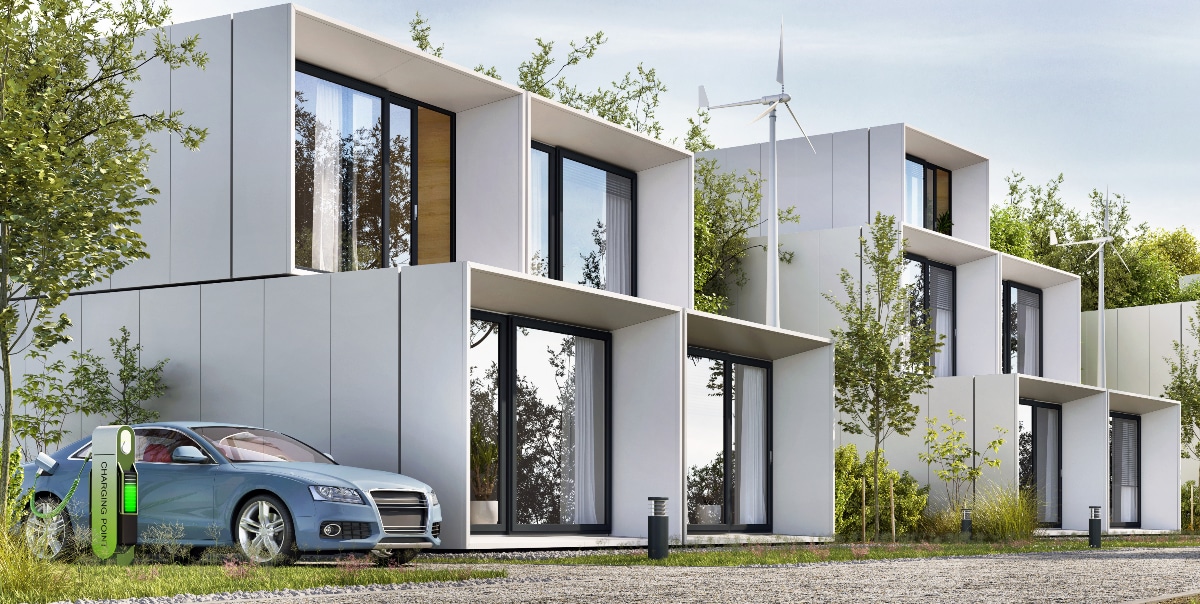How to Assess Interest in EV Charging for Multifamily Buildings

4 Min. Read
Electric vehicle (EV) sales are accelerating, and EV drivers strongly prefer electric car charging at home. These trends will impact your properties and residents, probably sooner rather than later.
It is not too early to consider installing EV charging stations in your communities. Multifamily EV charging is an increasingly marketable amenity that raises property values and leads to happier and more loyal residents.
But multifamily EV charger installations require significant investment and might be considered premature if only a few of your residents drive EVs or plan to purchase one. Multifamily electric car charging at home will soon become necessary, but is it advantageous or urgent?
Assessing residents’ interest in at-home EV charging
Before installing charging infrastructure, you should carefully evaluate volume of electric vehicles and your residents’ interest in EV charging stations at your properties. Your assessment should include communications with current residents and incorporate projections based on several other factors, such as local EV buying trends and resident and EV driver demographics.
Armed with this information, you can compare interest levels and demand with installation and administration costs to make a good business decision.
Research EV sales trends and resident demographics
While it is clear that EV sales are booming, interest in EVs and EV charging solutions varies across localities and demographic profiles. Some drivers cannot wait to drive an EV, but others are more deliberate in their approach. And some may never make the switch.
For instance, if your residents are primarily Gen Z-ers and millennials, interest levels will be higher than if your residents are older. If your building is in an urban area, interest will be higher than in rural areas. Include the items below in your research:
- EV driver demographics. Understand who drives EVs or is planning to purchase one and assess whether your residents fit this profile. Over 30% of Gen Z-ers and 35% of millennials expect to own EVs within the next five years. As a result, interest levels will be higher if your residents belong to these age groups.
- Levels of EV readiness. EV adoption is likely to increase faster in states with a high level of EV readiness. EV readiness levels measure various factors ranging from purchase and charger installation incentives to EV market penetration. Nevada, Mississippi and Hawaii have the highest EV readiness scores, so if your building is in one of those states, the interest level among your residents will tend to be higher.
- Soaring gas prices and other trends. Some trends, like higher gasoline prices and the electrification of commercial fleets, could accelerate EV adoption regardless of demographics. Again, if more EVs are on the road, interest in installing chargers at your properties will increase.
Assess interest in your community
Get a feel for the general interest level of your surrounding community. Check out local developments, from EV sales to local government initiatives, to gauge interest levels.
- EV dealers and sales. Locate certified EV dealers in your area. A concentration of dealers near your building will indicate that local EV sales are strong.
- EV owners’ groups. Research local EV owners’ associations in your area as they are a reliable indicator of EV popularity and may have access to research that can benefit your efforts.
- EV-related hashtags. Look for information using EV-related hashtags on social media. Hashtags can identify increasing levels of interest.
- Local government. Contact your local government about upcoming projects like installing public chargers or introducing EV ownership incentive programs. If the local government is engaged in EV adoption, that’s a good sign for interest levels.
Survey your residents
A survey of current residents is the most direct method of assessing interest. The benefits of home EV charging are clear for some of your residents but less so for others. So your survey should capture both perspectives. What questions should you ask?
- Ask general questions about residents’ plans. Ask residents about their plans and how long they plan on staying in the building.
- Ask about their ownership and interest in EVs. Do residents already have an EV? If so, where are they charging it? Do they plan on buying one? If yes, how soon?
- Ask about barriers to buying an EV. What concerns do residents have about EVs, and do they anticipate these concerns to increase, decrease or stay the same? Is accessing reliable and convenient charging an obstacle? Consider listing potential barriers and asking residents to check all that apply.
- Ask about price sensitivity. What pricing model would appeal to your residents? Would they prefer to pay a rent increase or a fee per use? And can they share how much they would be willing to pay for the service?
In summary
Completing this level of research will provide you with the detailed insight you need to make an informed choice about bringing electric car charging at home to your properties. You can calculate your return on investment by comparing the current and projected interest levels to the estimated costs. That will guide your decision about whether to install EV chargers now or wait for higher interest levels.
Qmerit can help
Multifamily EV charging stations are an excellent opportunity to increase your properties’ revenues and marketability. But there are uncertainties in the process that you can clarify by careful planning with a company that shows a successful track record in EV charging implementation.
Qmerit is that company. We are the leading installer of EV charging stations in homes and multifamily properties in the U.S. Qmerit has an extensive track record of success and comprehensive experience in EV charging and will stay with you from start to finish. Contact us to guide your multifamily project to success.
